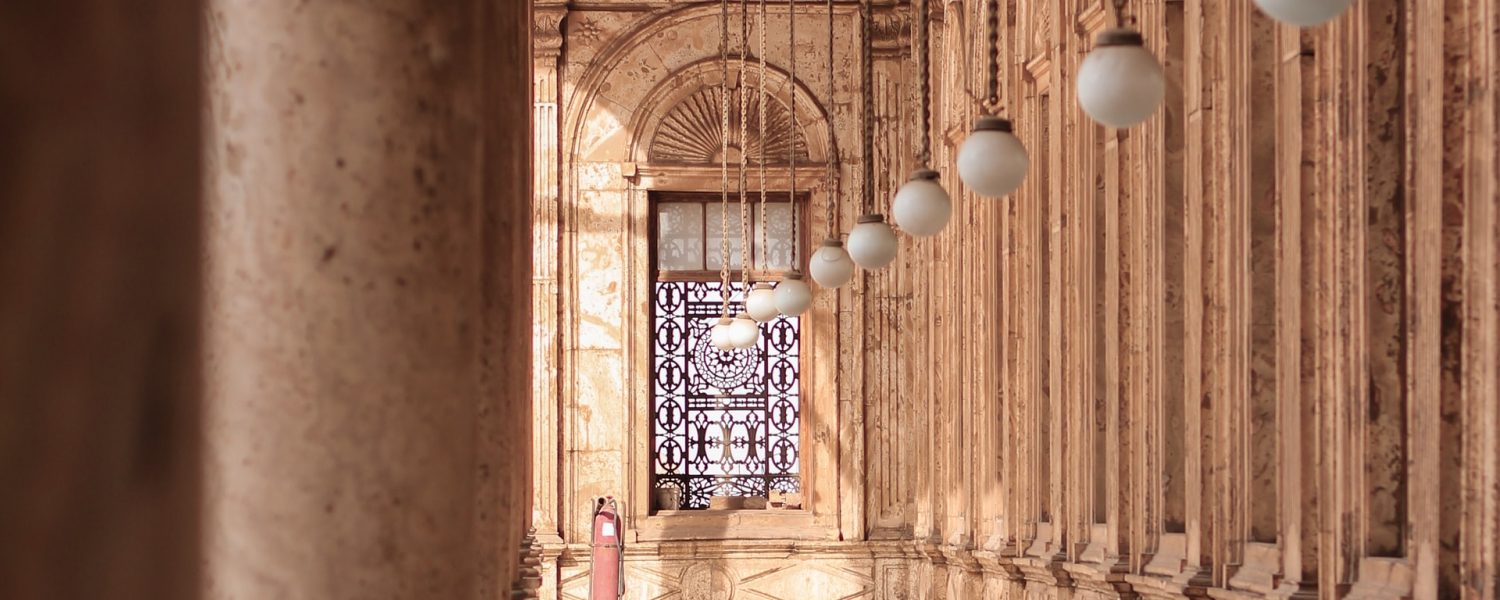The Mosque of Ibn Tulun
All information about The Mosque of Ibn Tulun
This mosque is not only the oldest in Cairo that has survived intact to this day but is the only remaining part of al-Qata’r, the Tulunid citadel.
The mosque of Ibn Tulun was built in 876-879 on Yashkur hill. It was the religious center of al-Qata’i’, the dynastic military citadel founded by Ahmad ibn Tulun and, together with al-Fustat and al-‘Askar, was the nucleus of present-day Cairo. The mosque, designed by a Christian architect, covers an area of over three hectares. The harmonious proportions of its volumes and refined decoration make it one of the masterpieces of Islamic architecture. The edifice is made entirely of red bricks covered with a layer of stucco. It is a typical example of a porticoed mosque that runs around a large central courtyard, in the middle of which is the fountain for ablutions. The courtyard is surrounded by four riwaqs or arcades consisting of a double row of arches and a back wall with 128 windows, each of which bears a particular decoration. The chief riwaq is the east one, commonly called the qibla, oriented toward Mecca. It consists of five orders of arches and is the sanctuary proper that houses the mihrab (the niche, usually elaborately decorated, that faces Mecca and is the materialization of the qibla) and the minbar or pulpit from which the imam (officiant) gives the sermon (khutba) during Friday noon prayer.
The minbar is made of finely carved wood and dates from 1296 when it was donated to the mosque by the sultan Husam al-Din Lagin, who restored the mosque and had the fountain built in the middle of the central courtyard. The back wall of the sanctuary is decorated with a long inscription with Quranic verses in Kufic script. The mosque, which has virtually no facade, is surrounded on three sides (north, south, and west) by an empty space called the ziyada, which in turn is surrounded by a tall wall with nineteen doors that isolates the mosque from the outside world. On the west side of the ziyada is a spiral minaret, this time not made of bricks but of blocks of stone.The shape of this minaret is unique in Cairo mosques, which has led scholars to believe that Ibn Tulun drew inspiration from the Great Mosque at Samarra, in Iraq.The finial (ornament) on the top of the miaret dates back to the restorations effected by Husam. It was built in the mabkhara (‘incense pot’) style.
Read More




